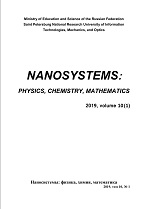|
This article is cited in 22 scientific papers (total in 22 papers)
PHYSICS
Minimum energy path calculations with gaussian process regression
O.-P. Koistinena, E. Marasb, A. Vehtaria, H. Jónssonbc
a Helsinki Institute for Information Technology HIIT, Department of Computer Science, Aalto University, Finland
b Department of Applied Physics, Aalto University, Finland
c Faculty of Physical Sciences, University of Iceland, 107 Reykjavík, Iceland
Abstract:
The calculation of minimum energy paths for transitions such as atomic and/or spin rearrangements is an important task in many contexts and can often be used to determine the mechanism and rate of transitions. An important challenge is to reduce the computational effort in such calculations, especially when ab initio or electron density functional calculations are used to evaluate the energy since they can require large computational effort. Gaussian process regression is used here to reduce significantly the number of energy evaluations needed to find minimum energy paths of atomic rearrangements. By using results of previous calculations to construct an approximate energy surface and then converge to the minimum energy path on that surface in each Gaussian process iteration, the number of energy evaluations is reduced significantly as compared with regular nudged elastic band calculations. For a test problem involving rearrangements of a heptamer island on a crystal surface, the number of energy evaluations is reduced to less than a fifth. The scaling of the computational effort with the number of degrees of freedom as well as various possible further improvements to this approach are discussed.
Keywords:
minimum energy path, machine learning, Gaussian process, transition mechanism, saddle point.
Received: 02.12.2016
Citation:
O.-P. Koistinen, E. Maras, A. Vehtari, H. Jónsson, “Minimum energy path calculations with gaussian process regression”, Nanosystems: Physics, Chemistry, Mathematics, 7:6 (2016), 925–935
Linking options:
https://www.mathnet.ru/eng/nano299 https://www.mathnet.ru/eng/nano/v7/i6/p925
|

|




 Contact us:
Contact us: Terms of Use
Terms of Use
 Registration to the website
Registration to the website Logotypes
Logotypes








 Citation in format
Citation in format 
